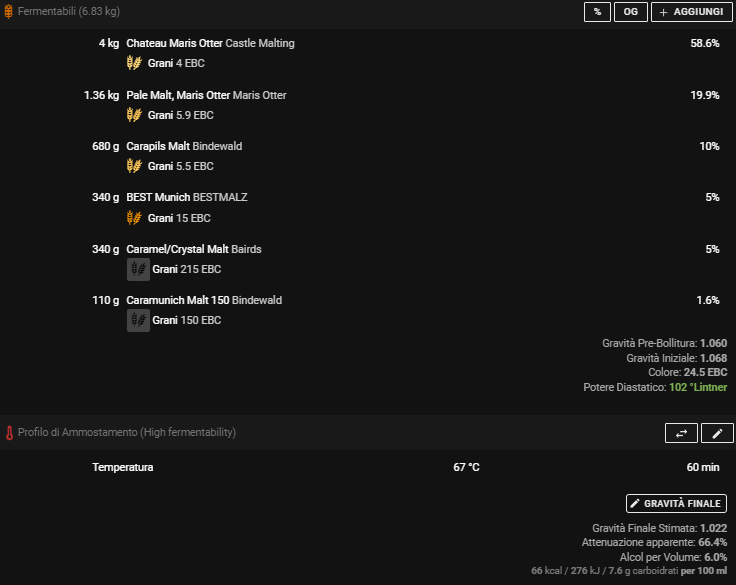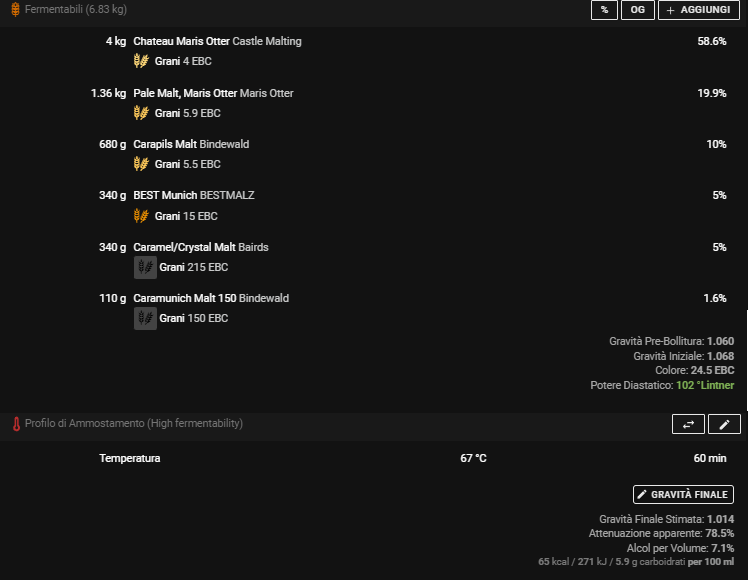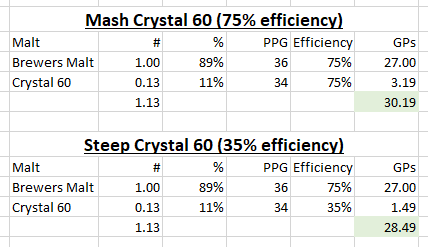Thomas1999
New Member
Hi, in many recipes I have found online, I see that the fact that some malts are not fermentable is overlooked. One example are carapils, caramunich and all malts that start with "cara".
The software I use (BrewFather) gives me the option of indicating if a malt is not fermentable so that it is not considered in the FG and alcohol calculations. However, if I indicate that these malts are not fermentable, the alcohol content that the software calculates changes by a lot, especially if the amount of non-fermentable malts in the recipe is considerable.
Here is an example where I marked carapils, caramunich and caramel malts as not fermentables:

abv = 6%
Instead, here is the original recipe where, however, non-fermentable malts contribute to the final alcohol content.

abv = 7.1%
Can you please explain the misunderstanding? Thank you.
The software I use (BrewFather) gives me the option of indicating if a malt is not fermentable so that it is not considered in the FG and alcohol calculations. However, if I indicate that these malts are not fermentable, the alcohol content that the software calculates changes by a lot, especially if the amount of non-fermentable malts in the recipe is considerable.
Here is an example where I marked carapils, caramunich and caramel malts as not fermentables:

abv = 6%
Instead, here is the original recipe where, however, non-fermentable malts contribute to the final alcohol content.

abv = 7.1%
Can you please explain the misunderstanding? Thank you.




